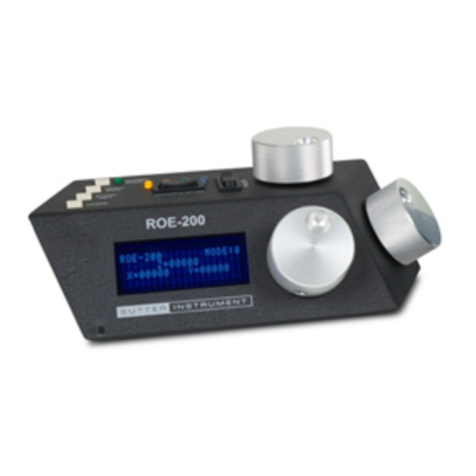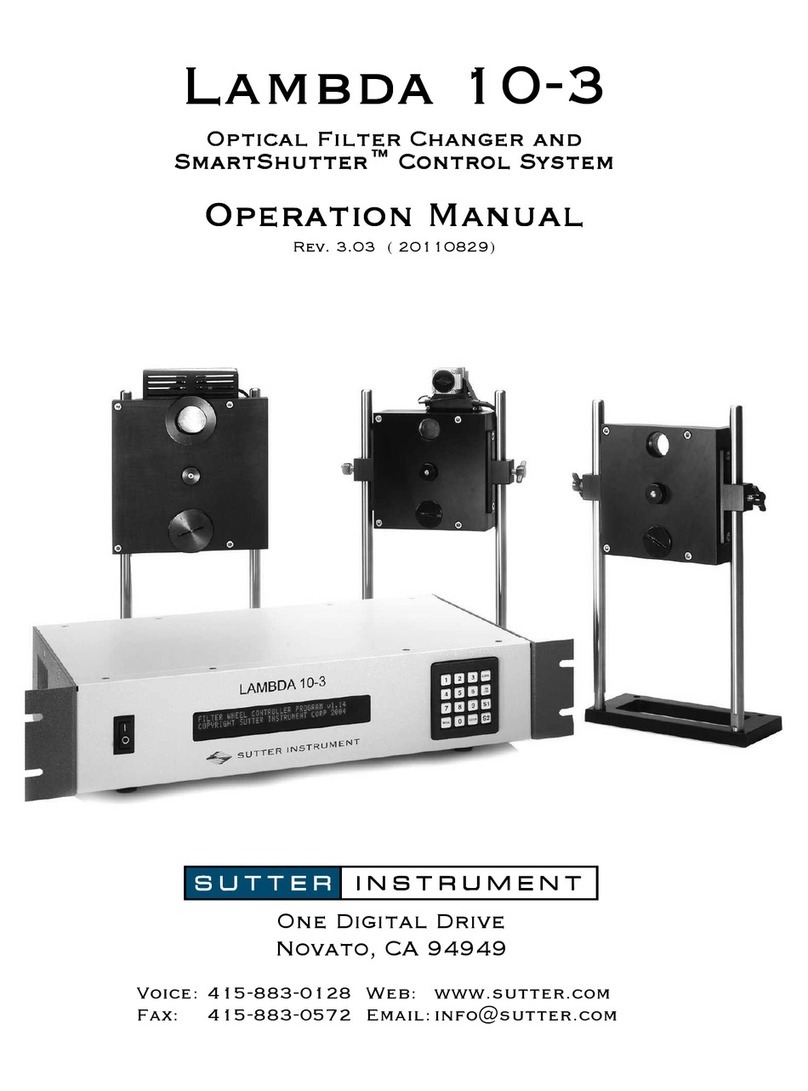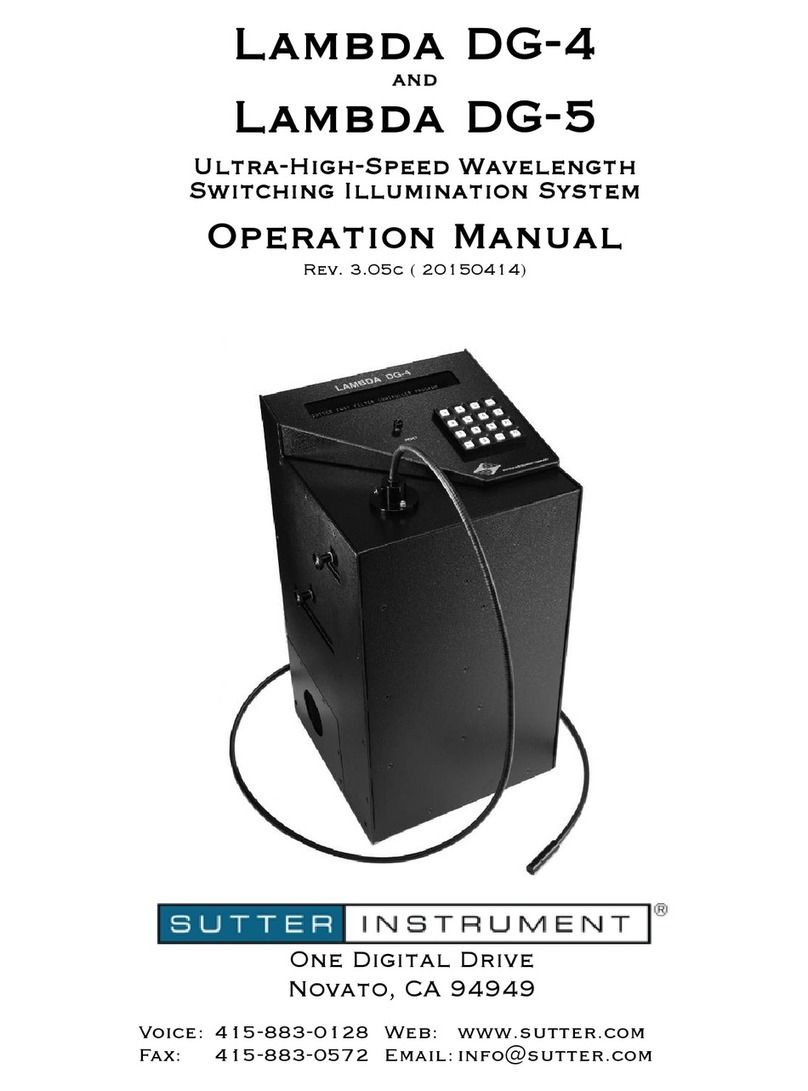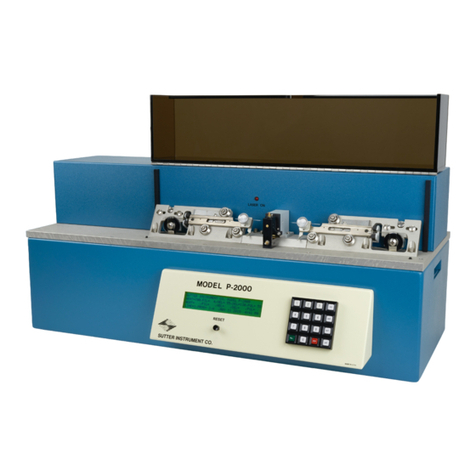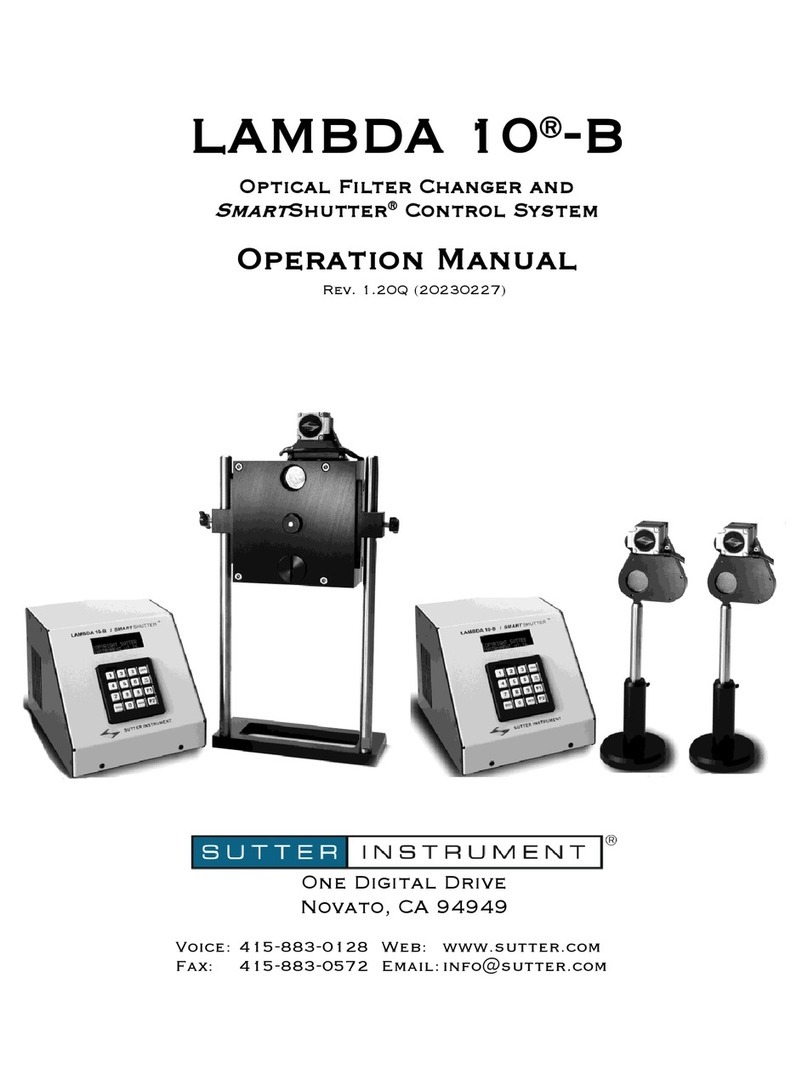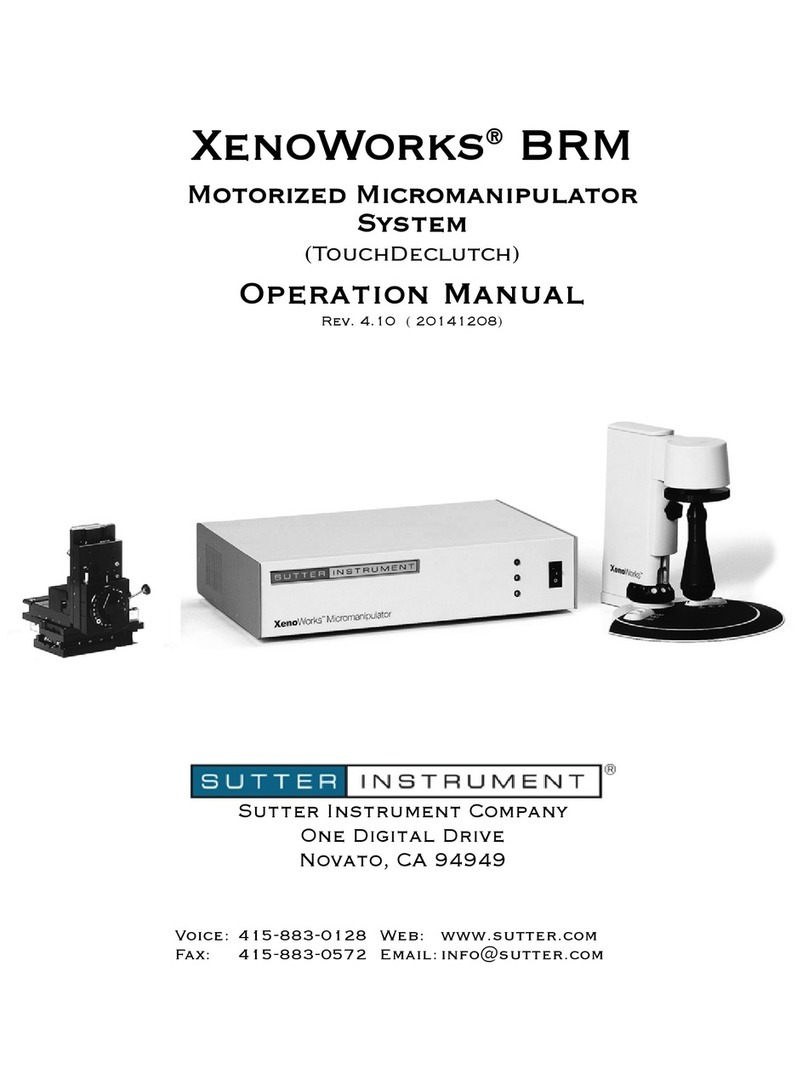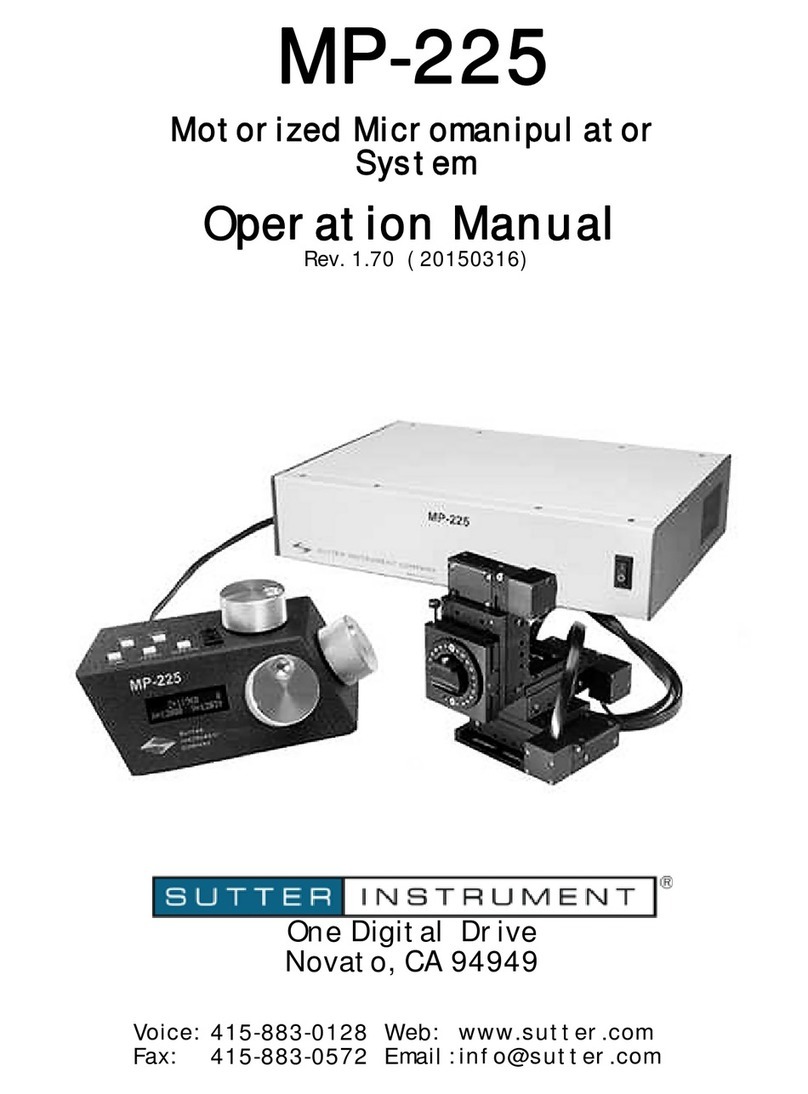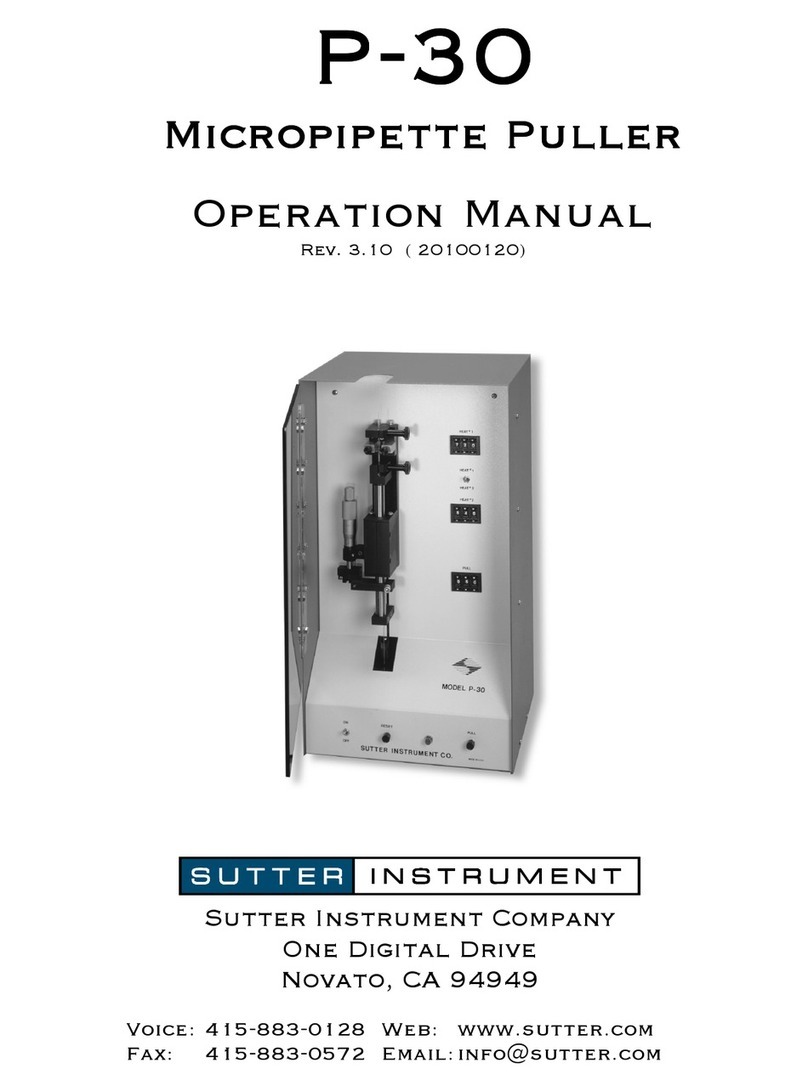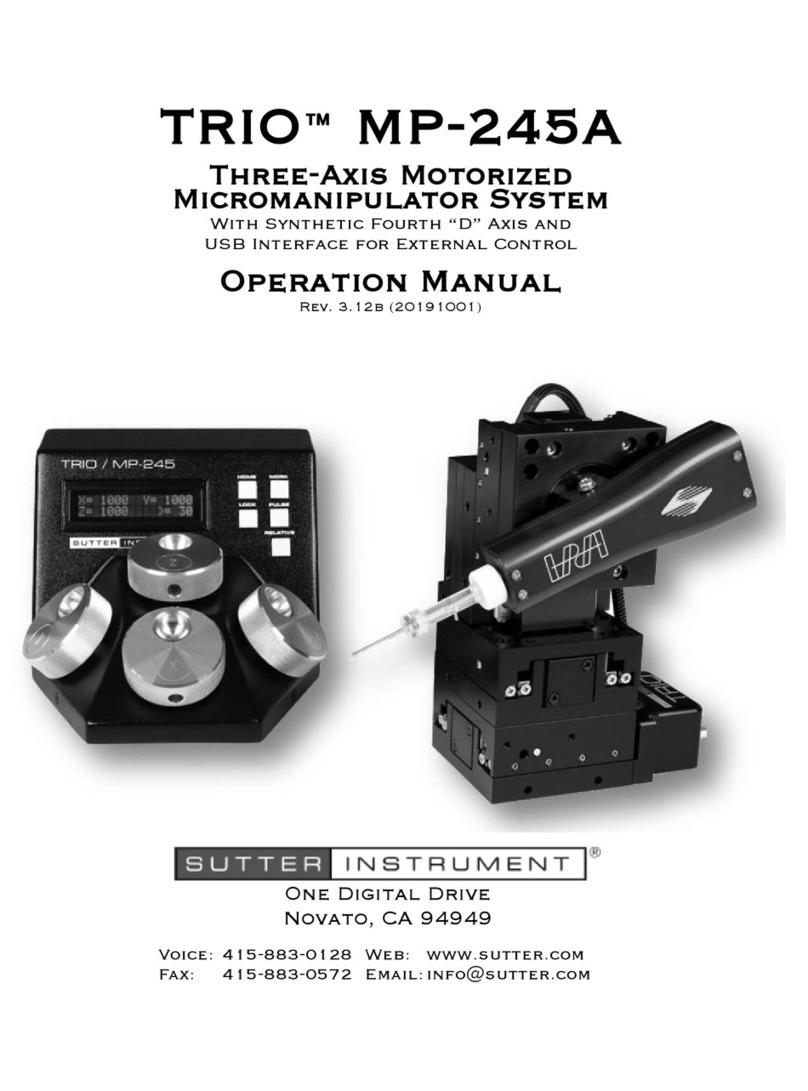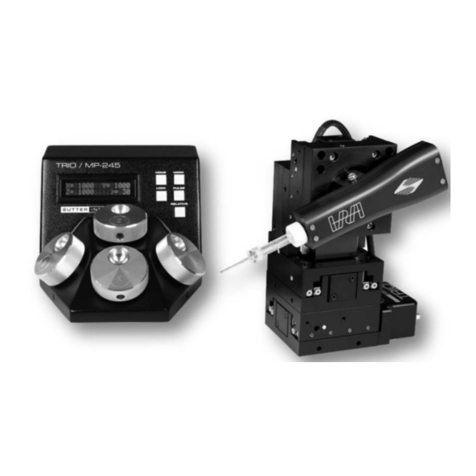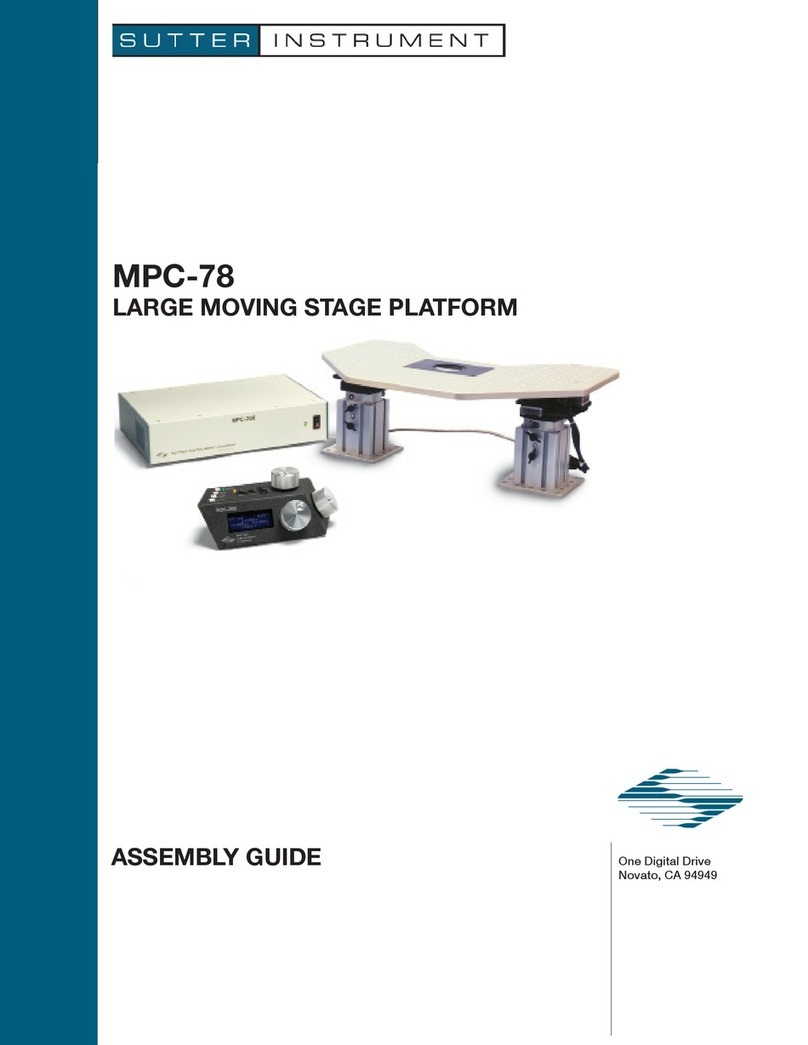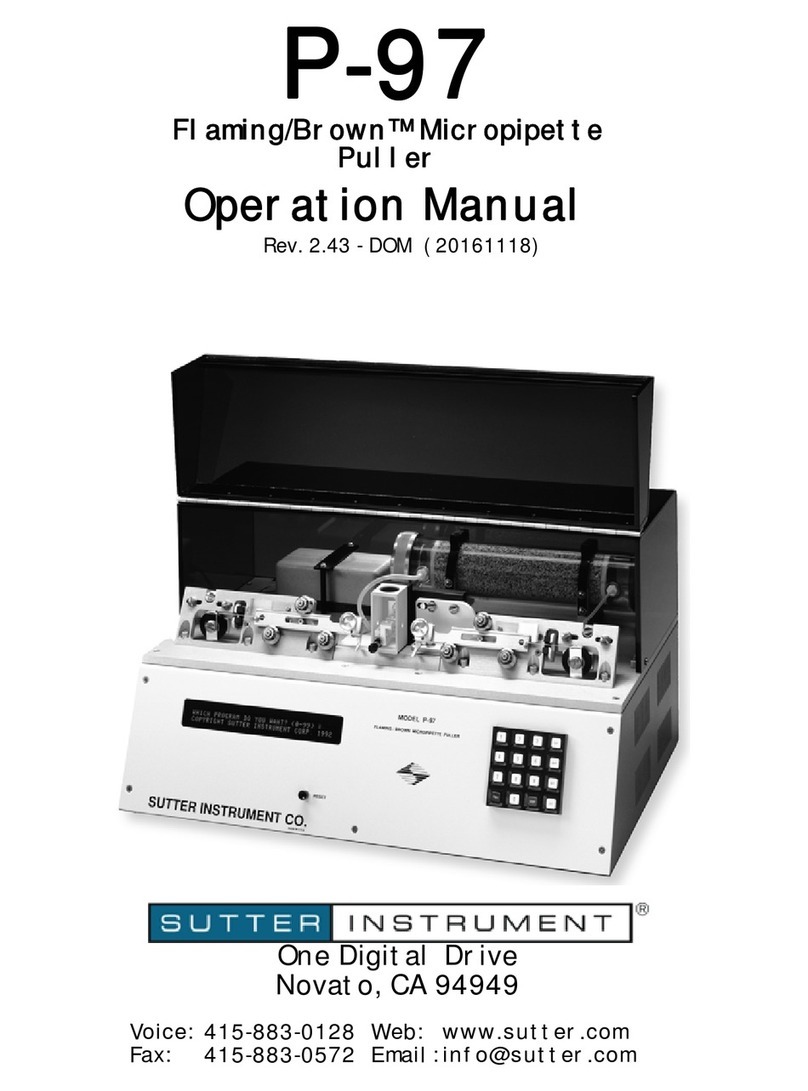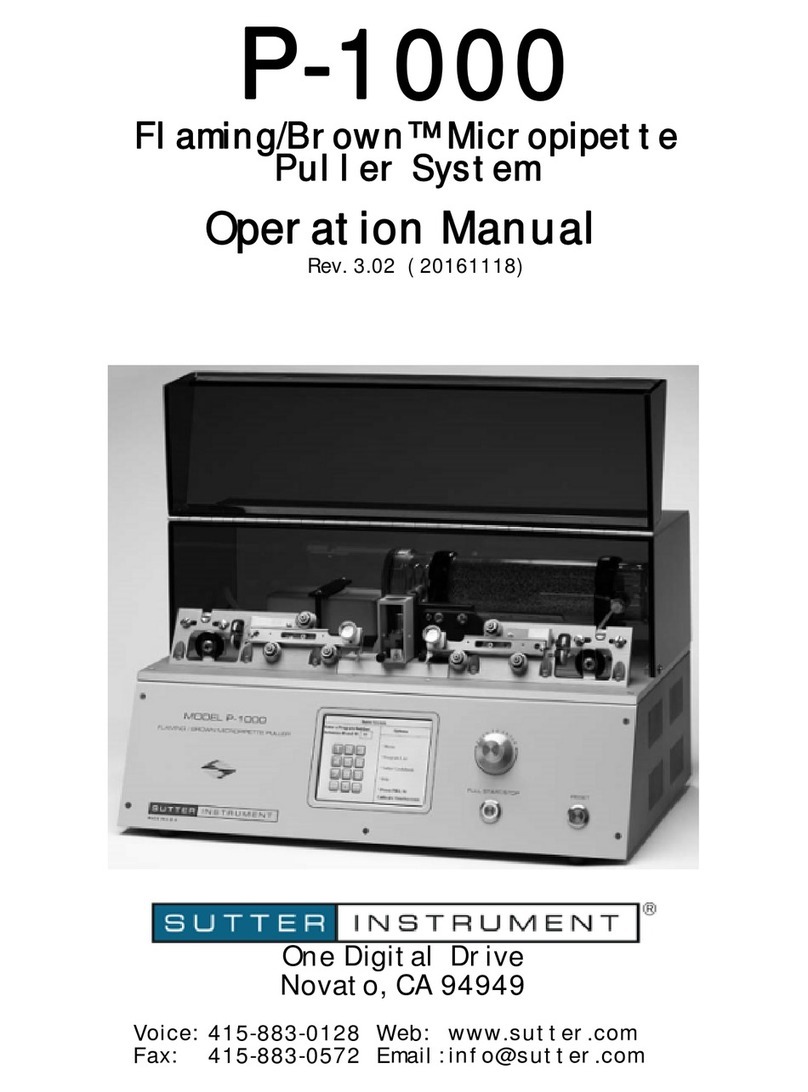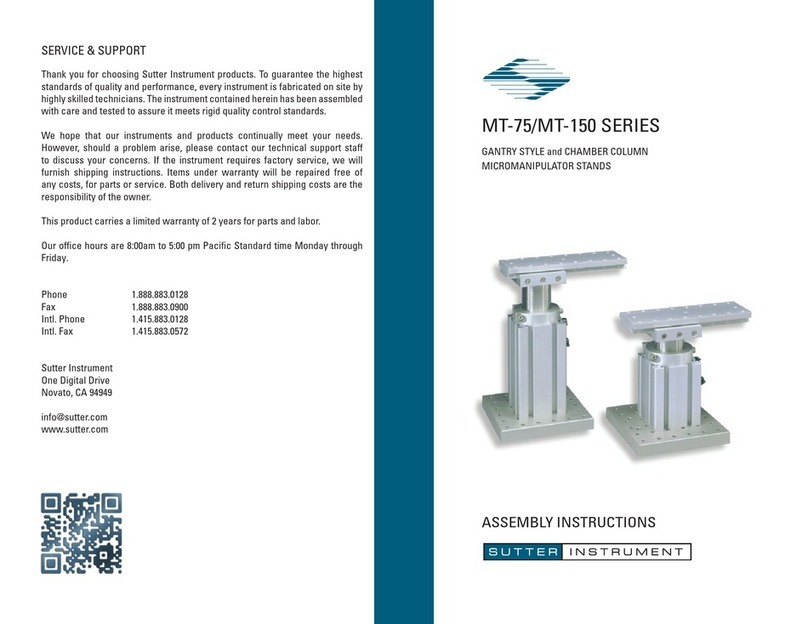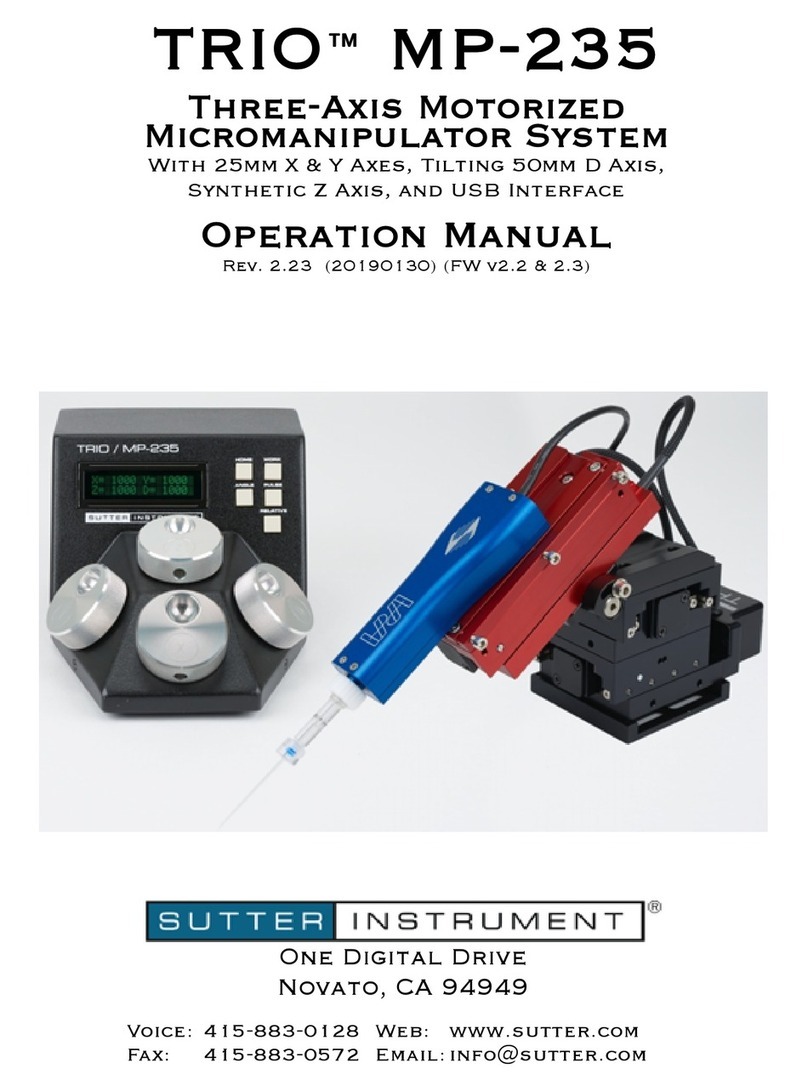
P-2000 MICROPIPETTE PULLER OPERATION MANUAL -– REV. 2.4C (20160412)
viii
3.5.1 RAMP TEST <1> ...................................................................................................................25
3.5.2 WRITE-PROTECT THIS PROG[RAM] <2>......................................................................26
3.5.3 RESET TIME AND DATE <3>............................................................................................27
3.5.4 MEMORY TEST <4>.............................................................................................................27
3.5.5 COPY A PROGRAM <5> ......................................................................................................28
3.6 Pulling Pipettes...............................................................................................................................29
3.6.1 Procedures ................................................................................................................................29
3.6.1.1 Looping ...............................................................................................................................29
3.6.1.2 Pull Results ........................................................................................................................30
3.6.2 Notes on Program Operation..................................................................................................31
3.6.2.1 HEAT ON...........................................................................................................................31
3.6.2.2 Program Memory ..............................................................................................................32
3.7 Parameter Adjustment...................................................................................................................32
3.7.1 General Information ................................................................................................................32
3.7.2 Micropipette/Microinjection Needle Fabrication..................................................................32
3.7.2.1 Programs ............................................................................................................................32
3.7.2.2 Selecting Program Parameters........................................................................................32
3.7.2.3 Glass Selection ...................................................................................................................34
3.7.2.4 Glass-specific Parameter Adjustment .............................................................................34
3.7.2.5 Sample Programs (for Quartz glass) ...............................................................................35
3.7.3 Patch Pipette Fabrication .......................................................................................................36
3.7.3.1 Programs ............................................................................................................................36
3.7.3.2 Selecting Program Values ................................................................................................36
3.7.3.3 Glass Selection ...................................................................................................................37
3.7.3.4 Glass-Specific Parameter Adjustment ............................................................................38
3.7.3.5 Optical System Adjustments ............................................................................................38
3.7.3.6 Suggested Practices...........................................................................................................39
3.7.4 Optic Fiber Fabrication ...........................................................................................................39
3.7.4.1 Fiber Preparation ..............................................................................................................39
3.7.4.2 Programs ............................................................................................................................39
3.7.4.3 Selecting Program Parameters........................................................................................39
3.7.5 Electrospray/Nanospray Tip Fabrication ..............................................................................40
3.7.5.1 Glass Preparation..............................................................................................................40
3.7.5.2 Programs ............................................................................................................................40
3.7.5.3 Selecting Program Parameters........................................................................................41
3.7.6 Technical Tips ..........................................................................................................................41
3.7.6.1 Maintaining Pipette Wall Thickness of Quartz Glass...................................................41
4. APPLICATIONS AND TECHNIQUES ..........................................................................................43
4.1 Pulling Very Short Micropipettes .................................................................................................43
4.2 Pulling Large-Diameter Glass.......................................................................................................44
4.2.1 Background...............................................................................................................................44
4.2.2 Principles and Strategies.........................................................................................................44
4.2.3 Suggested Practices..................................................................................................................45
4.3 Determining Tip Concentricity .....................................................................................................45
5. MAINTENANCE...............................................................................................................................49
5.1 Cleaning ...........................................................................................................................................49
5.1.1 Exterior .....................................................................................................................................49
